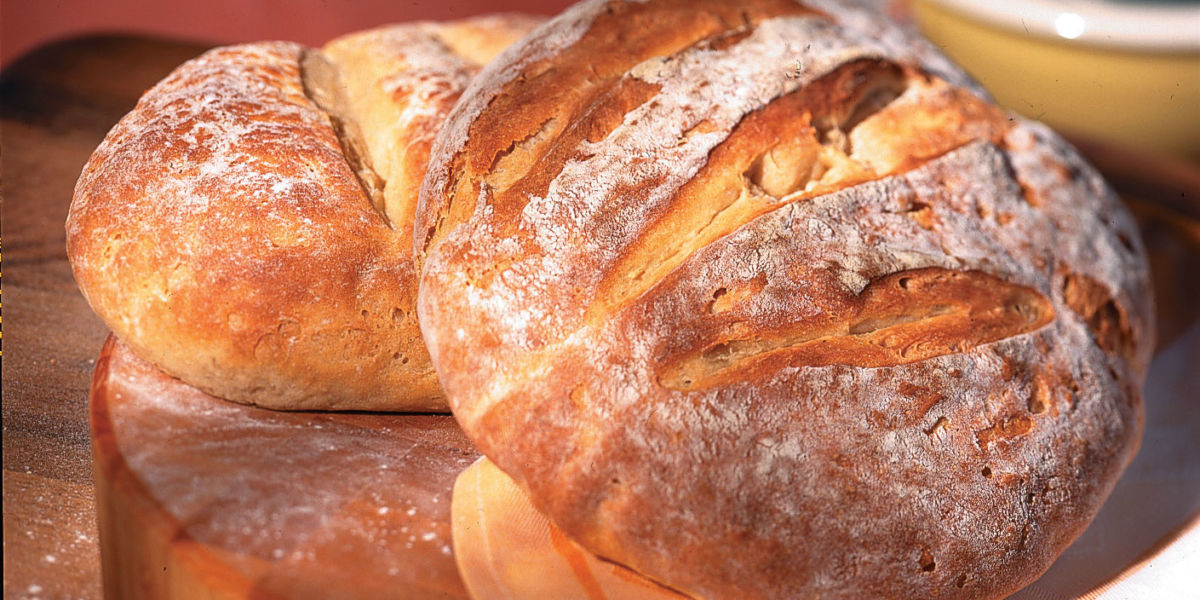
Our daily bread: easier than you think!
Machines do the mixing; you craft the loaves

James Carrier
Our Centennial Sourdough bread.
Bread machine recipes:
- Sourdough Starter
- Sunset Centennial Sourdough
- Hearth-Baked Centennial Sourdough
- Chili-Cheese Sourdough
- Hearth-baked Chili-Cheese Sourdough
- Basic White Bread
- Bulgur Wheat Bread
- Brioche
- Panettone
- Five-Seed Wheat Bread
- Tropical Banana Quick Bread
